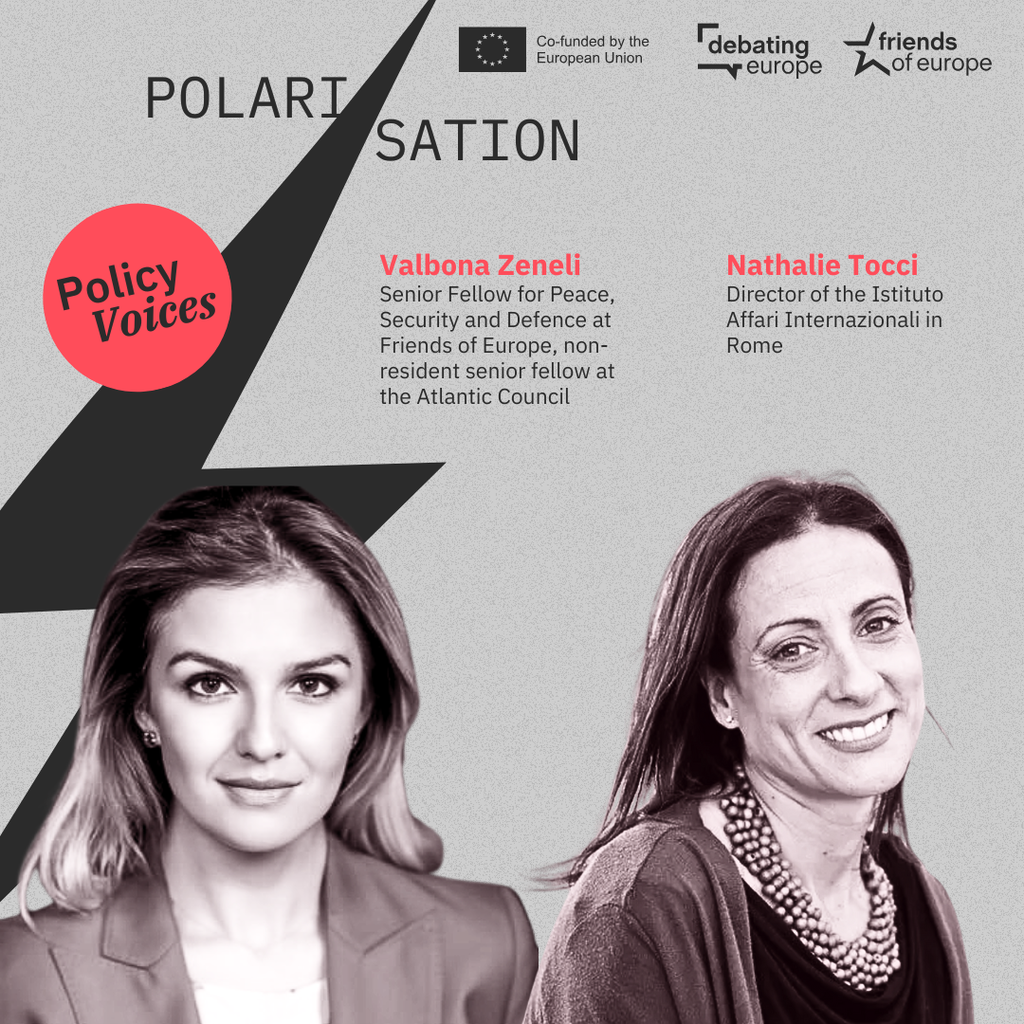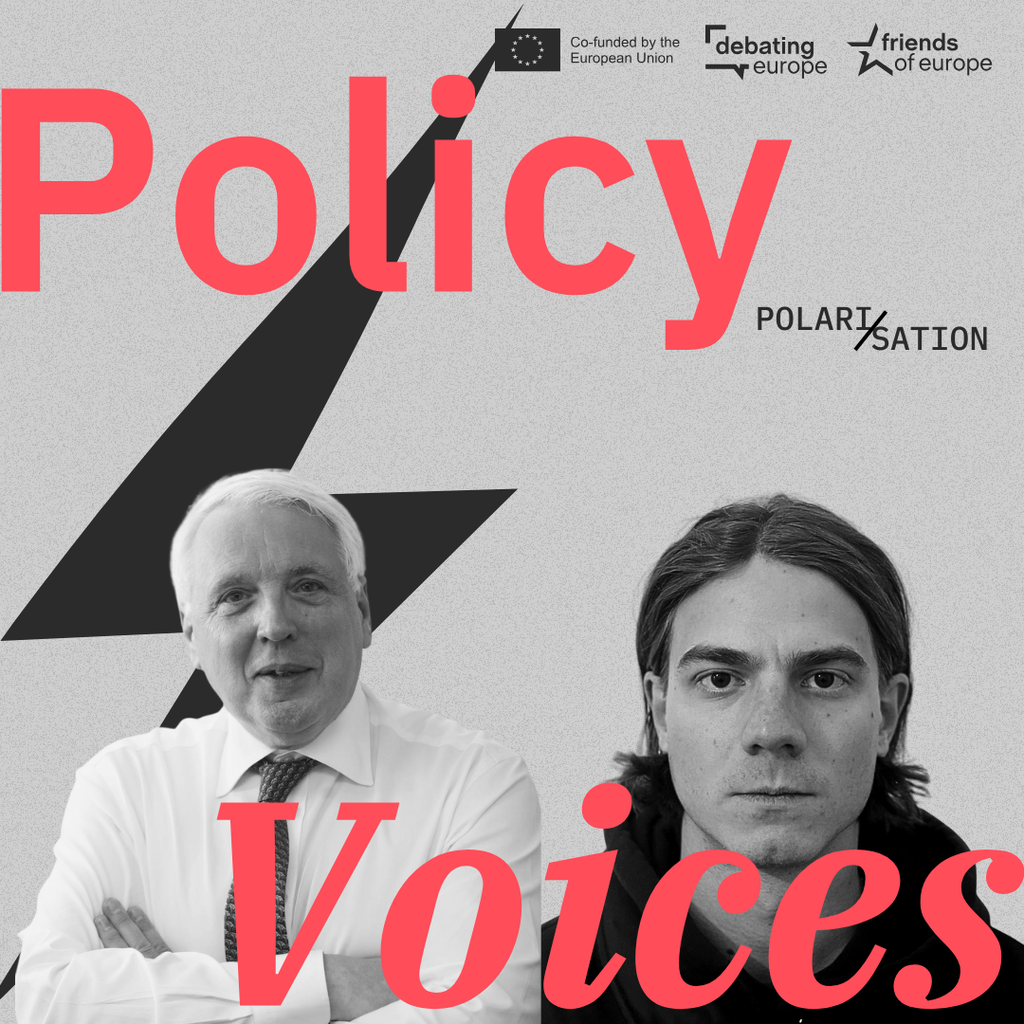From ambition to action: building Europe’s Defence Union
Past event In person

- Area of Expertise
- Peace, Security & Defence
Peace, Security & Defence

Senior Advisor at Defend Democracy, Lecturer at the Institute for Security Governance and former Senior Fellow at Friends of Europe.
In his 1962 State of the Union address, US President John F. Kennedy noted that the “best time to fix the roof is when the sun is shining”. This sentiment seems appropriate as we approach 2021 since it seems the sun will be shining again on the transatlantic relationship with the inauguration of President-elect Joe Biden.
Given US President Trump’s hostile tone toward European leaders and the multilateral order, while at the same time pushing them to meet their NATO defence spending targets, it’s no surprise that many long for the days of transatlantic ‘normalcy’ again. But lest we forget, it was President Obama who wanted the US to pivot to Asia while also pushing Europe to bring more to the table on defence.
Shared values and interests are what allows the relationship to endure a test like the Trump presidency, but even before 2016, it was obvious the relationship needed to evolve. The US is still more broadly engaged in the world but is still focusing more on Asia while Europe is increasingly pivoting to Africa – and both remain interested in stability in the Balkans and Middle East.
In the last few years, discussions on European strategic autonomy have increased in their intensity, with its most ardent supporters seeing a window of opportunity to be seized as Trump seemed to be de-coupling the US from Europe. Still, others held their breath for a renewal of the transatlantic bond once Trump left the White House.
Now that Biden has won the US election, some see the hope for strategic autonomy dimming, when in fact the opposite is true
At the extreme end, both sides seemed to view the way forward for Europe as a binary choice: either strategic autonomy or a renewed transatlantic bond. Yet these two goals are not mutually exclusive.
Now that Biden has won the US election, some see the hope for strategic autonomy dimming, when in fact the opposite is true. There has never been a better time for Europe to take concrete steps to achieve strategic autonomy whilst simultaneously renewing and updating the transatlantic relationship during the Biden presidency.
In the past few years, more than a few European diplomats have remarked that even if President Trump only lasted one term, how could they be sure Americans would not elect another such leader in a few years’ time? It’s a fair question that also indicates the urgency for Europe to “fix the roof while the sun is shining.”
When reading official statements and polling colleagues in capitals on how strategic autonomy is defined, the responses are varied. To some, it means the ability to take on greater responsibility as a global actor while for others it represents emancipation from reliance on one of its most enduring partners, the United States. Still, others point to strategic autonomy as a way to avoid relative decline in a changing global landscape.
Previous European talk of strategic autonomy, from the 1990s onward, caused concern in the US
And yet, for the diversity of views on strategic autonomy, one common theme emerges: a Europe that can determine its own future. The differences in definition, it seems, are in how to achieve it.
A few questions must be asked going forward, starting with: how will the EU know when it has achieved strategic autonomy? What is the level of ambition in terms of specific milestones to be reached for strategic autonomy to become a reality?
What capabilities would a Europe with strategic autonomy need to be able to manage one or more of the current crises in Nagorno-Karabakh, Syria, or Libya if it decided to do so?
Previous European talk of strategic autonomy, from the 1990s onward, caused concern in the US. Nowadays, Washington has grown more comfortable with the idea, realising that a stronger and more capable EU could strengthen, rather than weaken, NATO.
Europe is not the only one facing new budget realities, as the United States and other partners face difficult spending decisions in the coming years due to pandemic recovery requirements
Looking at NATO’s defence spending in the post-Brexit era, we see that 80% of the alliance’s defence spending is made by its non-EU members. Clearly, while the EU and NATO are working closer together in recent years, it seems their member states have divergent threat perceptions as evidenced by their levels of spending on defence.
Yet a number of recent EU defence initiatives look to turn this tide, with ambitions to not only strengthen the European defence industry but also to spend more and produce capabilities that allow the EU to conduct its own global operations should it decide to do so.
One previous concern which should be set aside is over duplication of efforts since key military capabilities on both sides of the Atlantic are now more finite than ever. However, we’ve dropped below a resource threshold where duplication could even apply.
Europe is not the only one facing new budget realities, as the United States and other partners face difficult spending decisions in the coming years due to pandemic recovery requirements. Thus, some level of mutual reliance on both sides of the Atlantic may be necessary for the foreseeable future, especially when it comes to key expeditionary capabilities.
So, instead of a decoupling, there is an opportunity for a more meaningful and balanced re-coupling
A strategically autonomous Europe will always need its own capabilities for territorial defence since reinforcement from the United States will take precious time to arrive regardless of how willing the Americans are to commit forces to the defence of their allies. But Europe will also need its own expeditionary capabilities (including sea and airlift) in order to shape outcomes in its own neighbourhood. This is especially critical since the United States is likely to have a large portion of its expeditionary support capabilities committed to the Asia-Pacific region for the foreseeable future.
In such a future, while both would be capable of acting autonomously, Europe could ask for US support in the EU’s broader neighbourhood while the US could seek European support in the Asia-Pacific region. Thus, a strategically autonomous Europe in a renewed transatlantic security partnership could transform it from a regional one into a global one.
So, instead of a decoupling, there is an opportunity for a more meaningful and balanced re-coupling. A stronger and more strategically autonomous EU, able to conduct military operations on its own globally, should not diminish Europe’s ability to operate with NATO, provided both continue to use the same standards for interoperability and capabilities remain available to both.
Recent times have shown that security requires more than just military capabilities to keep societies and economies safe. Hybrid threats, pandemics, terrorism, and disinformation campaigns are just a few of the challenges we face in 2020 and beyond. As a result, both transatlantic partners realise that when measuring their investments in overall security, they need to consider their entire toolboxes.
The EU is not alone in facing challenges to its strategic autonomy
Transatlantic strategic communications, cyber, law enforcement, and intelligence cooperation have remained strong and effective with neither side giving up its decision-making autonomy or ability to take action independently.
On matters such as energy security, technology, and foreign investment, the EU is not alone in facing challenges to its strategic autonomy. Issues surrounding energy dependence, digital sovereignty, and possible vulnerabilities stemming from certain foreign investments are shared by both sides. The recent pandemic has also highlighted that reliance on external partners for the production of key medical supplies and pharmaceuticals can impact decision-making autonomy as well.
Perhaps the biggest question on strategic autonomy is that 25 years after the “hour of Europe” in 1995, could the EU act on its own to decisively intervene in a similar-sized crisis in its neighbourhood?
If so, then hasn’t strategic autonomy on some level already been achieved? If not, what would it take in concrete terms to achieve it? Put into more concrete terms, if the EU had strategic autonomy now, what additional options would it have in shaping outcomes in Syria, Libya, and Nagorno-Karabakh?
After all, isn’t strategic autonomy about being able to shape outcomes so Europe can determine its own future?
Much of the defence and security discussion on strategic autonomy has been rightly centred on the hardware aspects; developing capabilities and promoting the European defence industry. But what about improving the ability to more deftly support crisis decision-making at the speed of relevance? After all, isn’t strategic autonomy about being able to shape outcomes so Europe can determine its own future?
So, what would a Strategic Autonomy Action Plan address? Here are a few key areas to consider:
A Europe that is taking concrete steps to determine its own future, while also renewing and rebalancing bonds with its closest partners, will be one that is more prepared for an era of shocks, a more valuable partner in the transatlantic relationship, and more able to deliver on its promise to its own citizens. But only if it seizes this window of opportunity.
Past event In person

Next event In person & Livestreamed

Past event Online

Past event Online





Stay informed
We use cookies and similar technologies to adjust your preferences, analyze traffic and measure the effectiveness of our campaigns. Learn more about our privacy policy.